Part 1 of deCervo At The deCade
10 Years of Progress
Decision training apps for real-world applications
February 14, 2024

Part 1 of deCervo At The deCade: Accelerating Cognitive Development
A Look Back on Decision Training History We’ve Made
This month marks 10 years, a full decade, of our company. Here, we look back at what we’ve done and where we’re going. From our founding in 2014, to our early work in Major League Baseball (2015-2018), we will review our early accomplishments. From our sustained work for the US Army (2017-present), to our integration into the National Hockey League’s referee / linesmen development (2018-present), we will examine our enterprise-scale research and apps. Along the way, we will highlight continuing accomplishments in baseball and fastpitch softball. Finally, we will review our first product suite outside of sports, the law enforcement / police training tool, e-TRAIN (2021-present). We will see where its early impacts have been and where it has yet to help police and community safety in the US.
For each of these stops on the deCervo deCade, we will revisit news articles and case studies of our own. We will track how brain science discoveries we made led to the products we help people with every day.
Overview
Part 1
For part 1 of deCervo at the deCade, we will cover 2014-2016. In 2014, we highlight the first signs in our scientific research that decision training may be possible. We talk about our initial mission to provide neuroscience-informed scouting and our initial company name, “Neuroscout.” In 2015, we recount our rebrand to “deCervo” and our change in focus to decision training. In that same year, we recount our early work in Major League Baseball and the continuation of our scholarly research. Finally, in 2016, we recount our capstone scientific findings and first signs of hitter development potential in pro baseball.
Part 2
Later in part 2 of deCervo at the deCade, we will cover 2017-2020. For 2017, we will look at the beginning to our research for the US Army and our first client results in pro baseball. In 2018, we will survey the early accolades and challenges from scaling our approach to hitter development. We will also look at the start of our 6-year relationship with the NHL Officiating Department this year. Finally, we will note the first full year of what became multi-year research for the Army. In 2019, we will cover new directions in baseball / softball informed by our previous season. We will recount first steps in making a product for police training. And we will recount the organizational shift that happened in the NHL’s development of officials that put our product directly at the center.
Part 3
Finally, in part 3 of deCervo at the deCade, we will cover 2021-present. For 2021, we will survey initial results in pro and college baseball and softball for our customize training program, uHIT Custom. In 2022, we will see continued progress with baseball / softball. And we will highlight first clients in police training, along with expansion in referee training. In 2023, we will note our first measurable effects on player valuation in pro baseball. We will also highlight the 3-year research grant awarded by the Army Research Office. Finally, for 2024, we will look ahead to the new developments rolling out this year and what expectations we have for their impact.
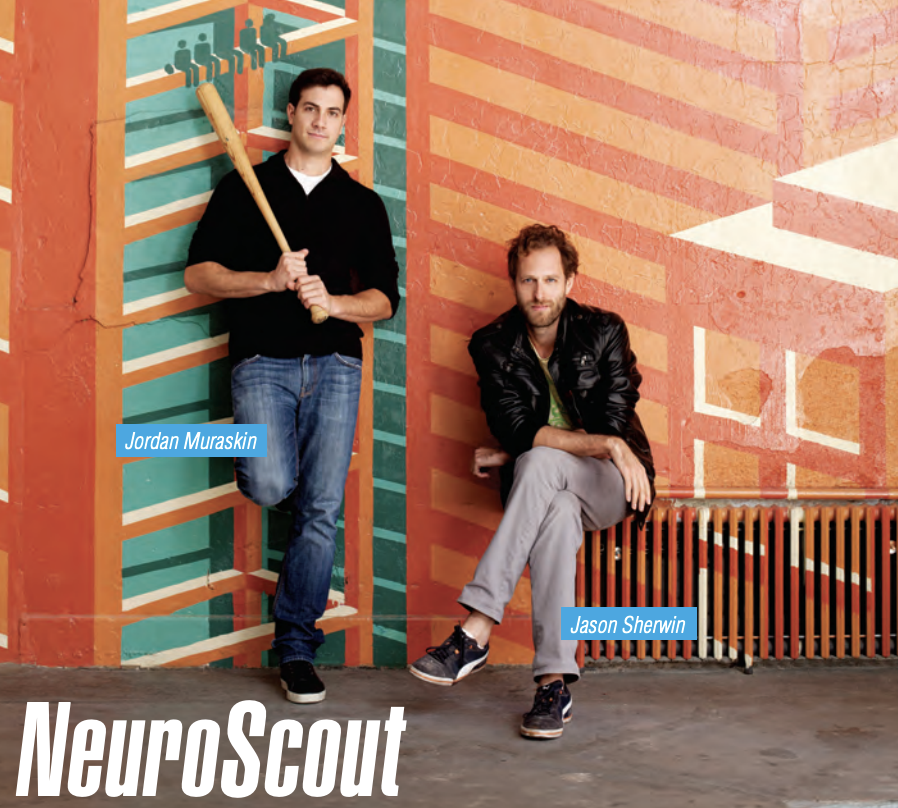
2014: First Awareness and Founding
By 2014, we (Jordan and Jason) were about 3 years into the basic research that would comprise an early foundation of our company. deCervo’s technologies and approach to cognitive development would develop from this research. Below, we will look at the early bits of evidence we had for why our technologies could work. We will also examine how they guided our first steps in this approach to cognitive development.
First Brain Signals in Sports
In 2012, we published our first study on the brain signals associated with deciding on different baseball pitches (see more here). This study didn’t tell us anything about hitters’ brain signals because all participants were non-athletes. We first had to teach these non-athletes what curveballs and sliders looked like. Once we did, this study did show us that there were distinct brain signals involved when these people recognized (or missed) pitches. It gave us a sound basis to take the next step by looking at how they compared with real baseball hitters (see more about that 2016 study here).
First Brain Signals in Defense
In 2013, Jason published with a US Army colleague our first study on the brain signals associated with decisions in a defensive environment (see more here). This study examined the brain signals that were unique to incoming gunfire responses. This study would form an early basis for our later work in police training (see here). By contrast to the above study in baseball, this study focused on Army veterans and others with small arms experience. Later research would explore what set these people’s signals apart from those of naïve civilians (see more here).
Two Baseball Conferences To Gauge Market
In 2012 and 2013, we put our early findings to the test in the baseball marketplace. In 2012, we presented our findings at the Society for American Baseball Research (sabr.org) meeting in Boston. We got early indication we were on the right track when the description of hitting a baseball by Bobby Valentine (see more here) basically matched ours. Coach Valentine said, “There are roughly three stages involved in hitting a baseball.” He continued, “First, you determine if this thing is going to kill you. Second, you decide where it’s going. And third, you try to hit it.” We provided a more quantitative version of this analysis (see here) at the MIT Sloan Sports Analytics Conference (see here) the following winter.
Both occasions convinced us that in the aftermath of Moneyball (2011) there would be a need soon in baseball to go deeper on the analytics. Our first guess was to approach this need as a scouting service of “cognitive analytics,” as Brian Kenny later called it (see more here). The February afterwards, we founded the company we believed would apply neuroscience to scouting sports talent with these analytics. In February 2014, we established “NeuroScout” as the company that would later become “deCervo.”
Two Articles To Put Us On The Early Map
By summer 2014, our approach to cognitive analytics for scouting – or “neuroscouting” (see more here) – was gaining traction. The Scientific American covered our early scientific findings first in July (see more here). And by the fall, the Wall Street Journal published an article on our approach to scouting (see here). In that article, the journalist did a profile of us too against another company operating in Major League Baseball. This company was similarly named “Neuroscouting.” We both had independently landed on the same concept / name, only learning about each other that Fall.
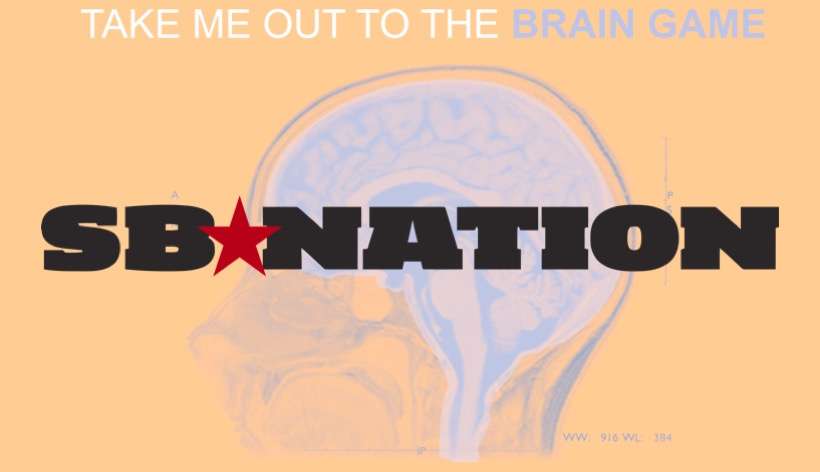
2015: Goodbye Neuroscouting, Hello deCervo and MLB
We got the hint that we needed to separate ourselves from any possible confusion with other companies operating in this space. That winter we changed our name to “deCervo.” Our company focus on “decisions” and the French root words for “of the brain” (in French, du cerveau) provided the basis for our new name. Even at this early stage, it was beginning to be clear that scouting would not be an end goal of our company. Rather, our capabilities went beyond others’ in our avenues to develop the decisions people make in demanding contexts. We would do it by making appropriate tools to measure and enhance the brain in those capacities. In this next step in part 1 of deCervo at the deCade, we look at our first steps doing so, as the newly minted deCervo.
First Spring Training
Within days of the Boston Globe’s article on our work (see here), Gabe Kapler (see here) called us to find out more. He wanted to know what we could do to help in his role then as Director of Player Development for the Los Angeles Dodgers. A few weeks later, the Dodgers became our first Major League Baseball org client. In one day, we provided the early form of the uHIT Assessment (see more here) – then with simultaneous brain measurement – to 12 hitters. This group included future All-Stars Joc Pederson and Justin Turner, each of whom did the brain measurement shown below. By the early spring, two more MLB orgs had hired us to do the same analysis for a set of their hitters.
More Publications, More Opportunity
That year, we also published two scientific articles in the leading brain imaging journal, NeuroImage (see more here). The first showed that there were distinct brain signals before a pitch. These signals indicated if a hitter would identify the upcoming pitch well or not (see here). The second article was even more important to our budding work with professionals and other elites. It showed that there were distinct and measurable brain signals of hitting expertise itself (see here). Similar results were found too among non-sports decisions of soldiers and marksmen (see here).
Together, these publications illustrated the opportunity to develop the brain functions measured in these individuals. The age- and gender-matched subjects were only showing differences in brain signals related to baseball and gunshot skills. Perhaps we could develop an approach to teach these skills? Maybe we could verify the learning with monitoring of people’s brain signals? The early opportunity to be a company that accelerated cognitive development was before us. We would do so by training people’s decisions and monitoring their progress with them.
There were two key interviews published on PBS’ SciTech Now and SB Nation that dug deeper into this mission. In July 2015, New York Times sportswriter Zach Schonbrun interviewed us to find out “can two entrepreneurs turn neuroscience into Moneyball?” (see more here). The following December, Hari Sreenivasan interviewed us for PBS. He wanted to find out how “deCervo explores the neuroscience involved in athletics, like when to swing a baseball bat” (see more here). Both interviews probed the budding direction we were heading in accelerating development. Schonbrun’s article led to his widely-read book on that topic a few years later, The Performance Cortex (see here).
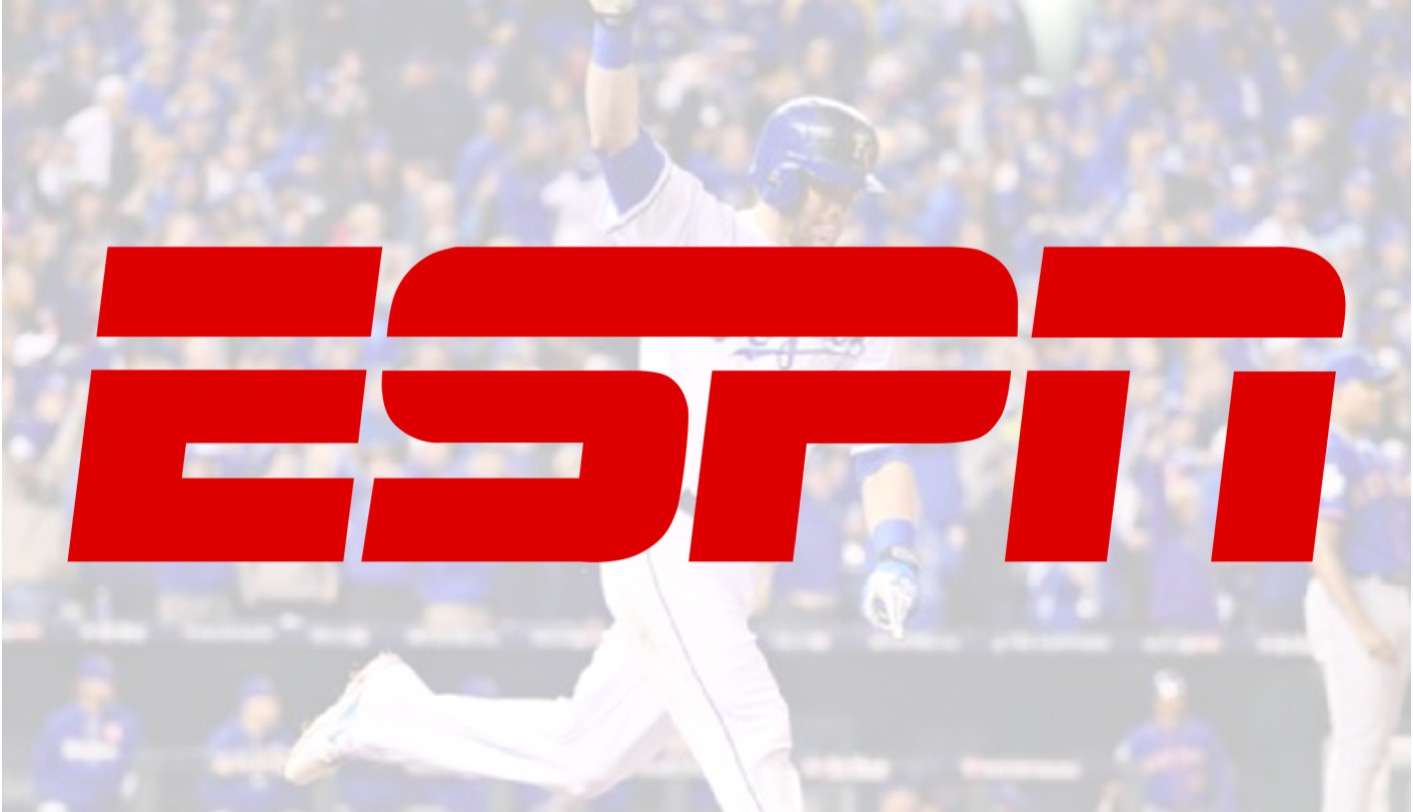
2016: Early Signs of Hitter Development
Our decision training approach showed early signs of efficacy this year. In two case studies, we found process metrics common to hitter development measurement moved with our analog metrics. Importantly, our metrics were captured in only minutes of app use with what would become uHIT Baseball (see more here). This compared to on-field measurements that took whole seasons (6-8 months) to measure. As a result, thereby providing an efficiency gain for the baseball market. In this last year from part 1 of deCervo at the deCade, we will look at those two studies. We also highlight the continued press and scientific publications of that year.
Changing to Brain Measurement Through The App
At Spring Training 2016, we met Mike Chernoff, who is now General Manager of the Cleveland Guardians (see more here). He told us the brain measurement version of the uHIT Assessment (see here) took too long. “Every decision we make is a tradeoff of reward vs. investment,” he told us. He continued, “if it’s too much of an investment and only a little possible reward then we can’t do it.” More than money, he was really talking about investment in time. We read the writing on the wall from that feedback. We paired down the uHIT Assessment with brain measurement (~1hr runtime) to just 15 minutes. Making a prototype uHIT Assessment for mobile device, we were able to deliver now on a phone or tablet (see more here). And we never looked back.
Chernoff’s advice made a lot of sense in baseball. And it proved to be the best way to bring decision training to other areas. These included fastpitch softball (see here), hockey (see here) and non-sports domains, like policing (see here). Our brain measurement studies would always provide the bedrock of any app developments. And this fact would set us apart from other “brain training apps.” There was operational smoothness to using an app to deliver our approach. And we stuck with it through the decade.
Give Us 15 Minutes and We’ll Give You The Season
With this new scalability, we could deliver assessments in baseball now to many hitters at once. One MLB org jumped on the chance and gave us 57 of their hitters to examine. We found demonstrable relationships between our 15-minute assessment (later, the uHIT Assessment – see here) and their on-field process metrics. One of these trends we show below and link to the upcoming study summary (available Mar 15, 2024 here):
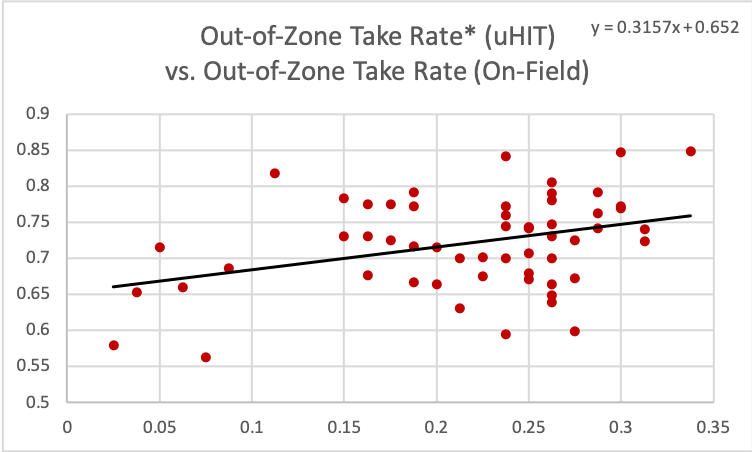
First Signs of Hitter Development Efficacy
That same year, another MLB org decided that the ease of use by mobile app was a viable option to train a set of minor league hitters. Our org client got a 10-week implementation of training with what now is uHIT Plus (see here). Before and after the in-season training, all hitters had assessments using brain measurement to gauge what (if any) changes occurred in the brain signals associated with their hitting decisions. We found universal signs of learning in both pitch and zone recognition skills (see here to learn more on each) within uHIT. For instance, we found the group’s speed-accuracy numbers went from 67 to 89 XP / Pitch over the course of training.
Furthermore, and most importantly, we saw those skills translate to hitting +103 more OPS points that season and the next (+18%, .584 to .687). This is the most significant finding in part 1 of deCervo at the deCade. Ahead of that study’s release in Spring / Summer 2024 (see here), you can see a summary of these hitter developments below:
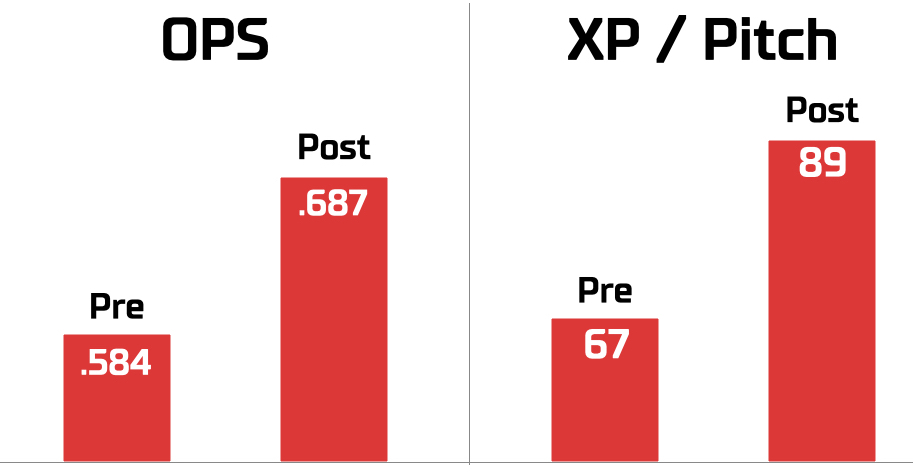
Capstone Brain Measurement Publications
As our research became increasingly applied, we wrapped the 5 years of brain measurement research with two capstone publications in the leading engineering and brain science journals. These publications provided a fitting close on the period covered in part 1 of deCervo at the deCade.
In May, the prestigious IEEE (see here) published our novel solution to brain measurement during quick decision tasks (see more here). The following July, the equally prestigious Human Brain Mapping (see journal here) published our brain measurement finding about potential learning and “replay” a hitter does after seeing a pitch (see more here). You can read more about each study here.
The press coverage continued too with both the Washington Post (see here), ESPN (see here) and National Public Radio (see here) asking for interviews.
